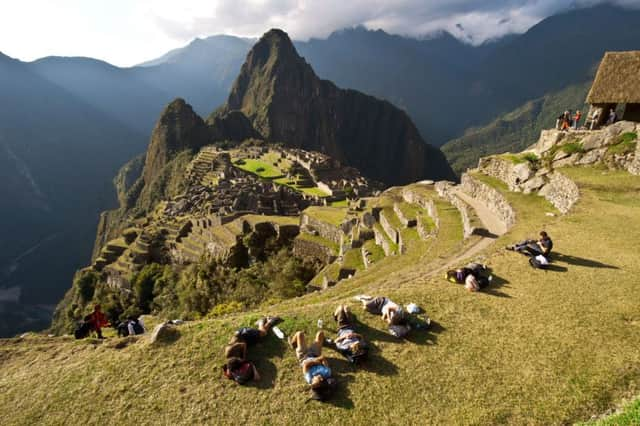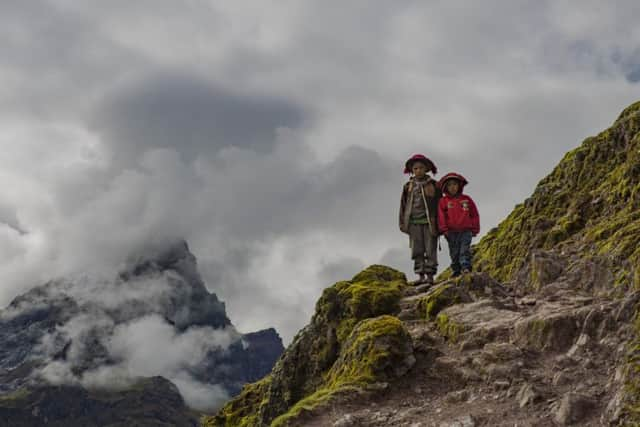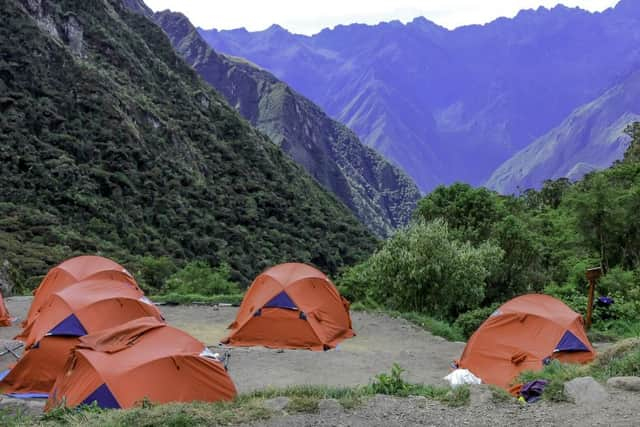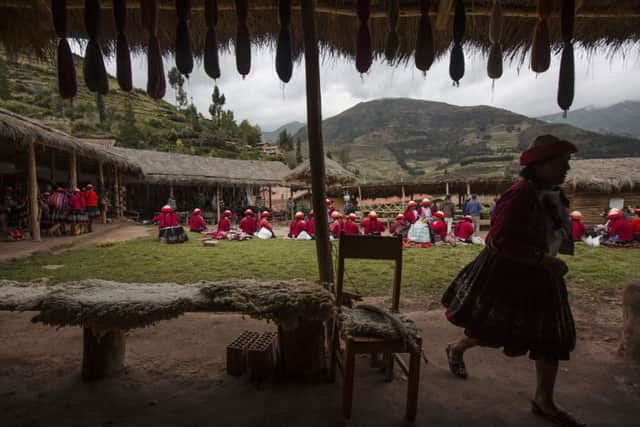Peru - backpacking to Machu Picchu, Scotland on Sunday travel


For an impromptu history lesson on Incas versus Conquistadors we couldn’t have hoped for a more inspirational setting. “Time for school,” our guide declared, as we perched on rocks looking out across the mist-shrouded ruins of Machu Picchu. The climax of an Andean adventure which had seen us hike to a lung-busting altitude of 4,800 metres, it was a breathtaking view in every sense.
Not normally one for roughing it on holiday, I’d been sold on the idea of two-star hotels and tents by the prospect of the Lares Trek… and the chance to explore Peru from an “alternative perspective”.
Advertisement
Hide AdAdvertisement
Hide AdOur trip was being organised by student and youth travel specialists STA, using G Adventures as the local operator. I was reassured to discover that the target audience was not only students and wide-eyed wanderers preparing for a gap year, but “30-somethings-plus” who, like me, had never lost their wanderlust.


As someone who’d reached their 50s without so much as lifting a rucksack, there was something surreal, however, about seeing my 60-litre Vango disappearing along the luggage belt at Heathrow. It would be another 18 hours – with a stop in Colombia – before we landed in Cusco, once capital of the Inca Empire and now gateway to the country’s most-visited tourist attraction.
At more than 3,300 metres above sea level, we immediately felt the effects of the rarefied atmosphere and were happy for the two days we’d been given to acclimatise while exploring the many markets and museums. The boom in tourism since the early 1990s has seen the city sprawl outwards and upwards from its attractive historic centre – a mix of Inca and Spanish architecture – on to the surrounding hillsides. It has also led to the introduction of regulations to protect the region’s more vulnerable archaeological sites.
Those with their hearts set on the classic four-day Inca Trail – the only way to hike directly to Machu Picchu through the iconic Sun Gate – must now secure a permit in advance with a licensed operator. By limiting numbers to 500 a day, these regulations have seen the emergence of “less touristy” routes such as Lares. Part of a seven-day package offered by STA, the three-day trek is suitable for anyone who is generally fit and healthy and not afraid of exertion or the elements. Slightly shorter than the Inca Trail, it’s also higher in elevation.
With airlifts not an option, it’s worth noting that the most likely way to be evacuated in an emergency is to be carried down to the valley by porters (so adept and at one with the terrain they prefer sandals to hiking boots).


It was something I discovered first hand after a fall and a bang to the head resulted in a precautionary visit to hospital, two hours away by ambulance.
Being piggybacked down a moonlit mountainside by a relay of fleet-footed porters, equipped only with head torches and an oversized papoose, was certainly “alternative” and also strangely exhilarating.
Our trek had started and would finish in Ollantaytambo, where dedicated tourist trains take travellers to Aguas Calientes, the final stop before the winding coach journey up to Machu Picchu.
Advertisement
Hide AdAdvertisement
Hide AdFrom Cusco, we followed the Urubamba River through the Sacred Valley, catching our first glimpses of typical mud-brick houses, hillside farming terraces and crumbling fortifications.


There were stops at some of the rural projects run by Planeterra, G Adventures’ non-profit partner foundation, helping to ensure that local communities benefit from tourism. Most impressive was the Ccaccaccollo women’s weaving co-operative, producing artisan alpaca products to support more than 60 families and safeguard traditional skills.
A few hours later we were heading into the hills; a colourful caravan of trekkers, porters and mules, the latter laden with everything from tables and food to emergency oxygen.
Day one of the trek involved a gradual six-mile ascent to Cuncani campsite where we would spend the first of two nights under canvas – and enjoy some unscheduled salsa dancing – in the shadow of imposing snow-capped mountains.
Having politely passed on the chance to buy roast guinea pig (cuy al horno) from vendors en route, a meal of quinoa soup and lomo saltado (beef stir-fry) set us up nicely for the second and most challenging day of the expedition. An 11-hour hike, it saw fertile foothills grazed by free-roaming llamas give way to serrated peaks and crater-like lagoons.
As the altitude and gradient increased, the temperature dropped and conditions became increasingly hostile. Sadly, one of our group was forced to turn back with altitude sickness, tempering our celebrations when we eventually reached the summit of Sicllaccasa pass.
Day three – a scenic five-mile descent – would feel like a leisurely stroll by comparison. It was also a chance to stop and share our food with some of the farming families who still speak native Quechua, rather than Spanish, as their first language.
Once safely reunited in the valley, Machu Picchu was at last within our sights.
Advertisement
Hide AdAdvertisement
Hide AdAt the highest point of our trek we’d been asked to honour the Andean gods with gifts of coca leaves; now they’d repaid the gift with the most mystical of views. With its lush backdrop of steep, forested escarpments, the citadel is instantly recognisable from countless travel photos. But it’s the elevated location and its affinity with the surrounding landscape that make the real thing so remarkable.
Thought to date back to the mid-1400s, the site was at the heart of the Inca empire as an administrative, religious and military centre, as well as home to its kings. From our craggy vantage point we learned how the complex was abandoned by its inhabitants in the 1530s in a bid to conceal it from colonising Spanish forces.
It would then lie forsaken for almost 400 years before being rediscovered – deserted and overgrown – by American explorer and historian Hiram Bingham in 1911. It’s a source of national pride that the entire estate – a monument to the ingenuity of Inca architecture, astronomy and engineering – survived untouched by the Conquistadors.
Perhaps I’d left it late in life to finally earn my backpacking stripes, but better late than never.
Standing amid the relics of an ancient civilisation whose belief system was rooted in the creation of the universe, a few years here or there didn’t seem to matter.
FACTFILE
STA Travel offers the 7-day Peru Lares Trek tour from £729pp. This includes 6 nights accommodation, transport, guide, visit to Machu Picchu, visits to community projects, selected meals and activities. Flights are not included. www.statravel.co.uk
We flew Heathrow to Cusco return, via Bogota, with Avianca Airlines, www.avianca.com